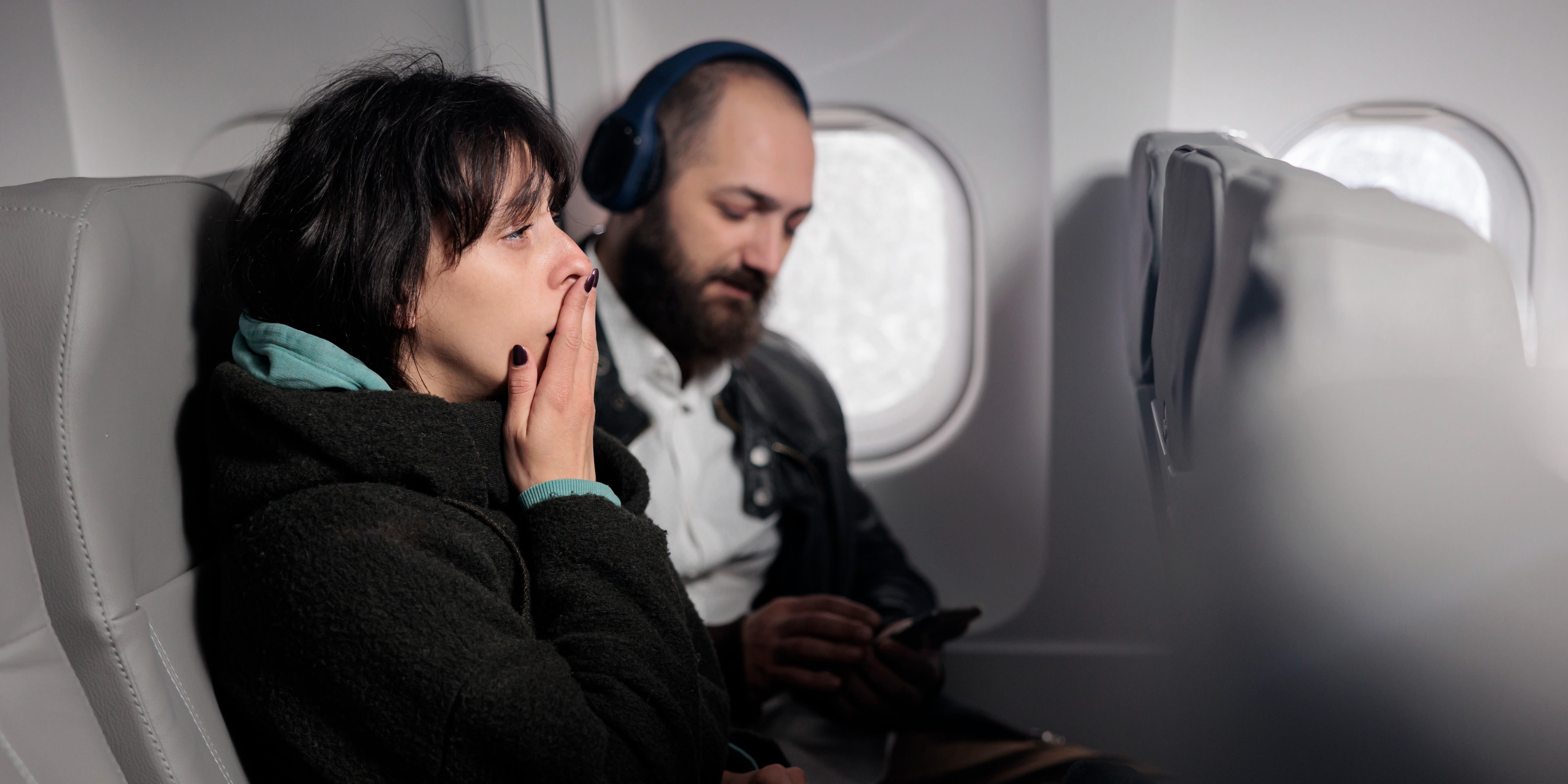Fear is an inherent aspect of the human experience, but what happens when that fear turns into a phobia and impacts your daily life? Phobias are irrational fears and anxiety that can cause increased levels of fear and range from being specific to extremely general.
But how can you distinguish whether your fear is within the limits of normalcy or has turned into a phobia? According to experts, it depends on whether your anxiety is extreme for the actual threat and your life circumstances. Normally, phobias last for more than six months, and in severe cases, they can even show physical symptoms such as numbness and sweating.
Here is a list of the most common fears that may sound familiar to you or might even surprise you:
- Nosophobia: Fear of developing a disease
- Arachnophobia: Fear of spiders
- Vehophobia: Fear of driving
- Claustrophobia: Fear of enclosed spaces
- Acrophobia: Fear of heights
- Aerophobia: Fear of flying
- Social Phobia: Fear of social interactions
- Trypophobia: Fear or circle clusters
- Atychiphobia: Fear of failure
- Thanatophobia: Fear of death
Let’s dive into the intricacies of each fear to understand what is the most common phobia and how it can impact a person. So let’s see what are the top 10 most common phobias, and is there any way to combat them?
1. Nosophobia: Fear of developing a disease
Nosophobia is one of the most common phobias, which means having the fear of getting sick or having a health problem that can affect your daily life by causing excessive worry and anxiety about health. People with nosophobia may constantly fear getting sick, leading them to take excessive precautions or avoid situations they perceive as risky.
This fear can interfere with their ability to enjoy life, engage in regular activities, and maintain their overall well-being. However, learning more about realistic health risks and seeking guidance from healthcare professionals can help manage nosophobia.
2. Arachnophobia: Fear of spiders
Arachnophobia is one of the most common phobias and it is a strong and irrational fear of spiders and other arachnids, including scorpions. This fear is commonly believed to have roots in our evolutionary history, possibly as a survival instinct, given that some of these creatures can be harmful.
Symptoms of arachnophobia usually start in childhood but can continue into adulthood. The anxiety caused by this fear can also lead to physical symptoms such as increased heart rate, sweating, trembling, and even panic attacks. To manage these symptoms, it is important to understand the origins of arachnophobia and seek support to overcome this intense fear.
3. Vehophobia: Fear of driving
Vehophobia is one of the top phobias, which is having the fear of driving when you get really scared or anxious about getting behind the wheel of a vehicle. People with vehophobia might avoid driving altogether because of this fear, making it difficult to do everyday tasks like going to work or picking up your child. However, with support and gradual steps such as taking short drives and driving with an elder, people can overcome this fear and become more comfortable with driving.
4. Claustrophobia: Fear of enclosed spaces
Claustrophobia is the fear of enclosed spaces, which involves feeling anxious or scared in tight or confined places, leading to symptoms like difficulty breathing or a fear of running out of air. This fear can trigger extreme anxiety in various situations, such as on airplanes and in crowded places like shopping malls or elevators. Essentially, you can feel claustrophobic in any space where you feel trapped or confined.
5. Acrophobia: Fear of heights
It is believed that acrophobia, the fear of heights, has some natural roots, either from our biology or from the process of evolution, which acts as a survival instinct. It is normal for humans to have some fear of heights because falling from high places can be risky and harmful. However, acrophobia is an extreme reaction—an irrational and overwhelming fear—that may be triggered by a childhood experience of falling or something that led to a major fall.
6. Aerophobia: Fear of flying
The fear of flying on a plane comes under the most common fears. This phobia is associated with being scared of closed spaces or heights. Sometimes, it can be inherited from your parents, who are also anxious about flying. Moreover, hearing about plane and helicopter accidents in the news can intensify this fear.
No matter which specific fear it is, having a panic attack when dealing with the source of that fear is pretty common. During a panic attack, a person might feel extremely scared, start sweating, have a fast heartbeat, experience chest pain, feel numb, or even have hot flashes.
7. Social Phobia: Fear of social interactions
Social phobia is one of the most common phobias, which means fear of social interaction, making everyday dealings challenging and stressful. This fear can have a significant impact on your daily life by causing you to avoid social situations or feel intense discomfort when dealing with them. People with social phobia may have difficulty engaging in simple tasks, such as going to a social event, talking in groups, or even interacting with others at work or school.
This fear can lead to isolation, interfere with personal relationships, and limit professional opportunities. It can even affect your ability to express yourself and participate in various aspects of life, including social engagement. As a result, people suffering from social phobia may experience a lower quality of life and be deprived of valuable experiences.
8. Trypophobia: Fear of circle clusters
Trypophobia is one of the top phobias, which is the fear of circle clusters, meaning being afraid or uncomfortable when seeing a bunch of small holes or circles close together. Even seemingly harmless things, like bubbles in a sponge or the seeds in a strawberry, can trigger this fear. For people with trypophobia, these patterns can cause uneasiness or anxiety. It's a specific kind of fear, and understanding it better can be the first step in finding ways to cope.
9. Atychiphobia: Fear of failure
Atychiphobia is one of the most common phobias that happens when the thought of not succeeding makes someone really anxious or scared. People with this fear might avoid taking risks or trying new things because they worry about not doing well, which may contribute to a feeling of stagnation and hinder personal growth. It can further affect relationships, work, and overall life satisfaction by preventing people from fully engaging in various aspects of life due to constant worry about failure.
Moreover, this can also lead to fear of judgment, low self-esteem, and reluctance to set ambitious goals. Overcoming atychiphobia often involves learning to see mistakes as opportunities to learn and grow, helping to reduce the fear of not getting everything right.
10. Thanatophobia: Fear of death
Thanatophobia is one of the most common phobias, which means feeling very scared or anxious when thinking about dying or the idea of not being alive. People with Thanatophobia might avoid discussions about death or even places associated with it. This fear can affect daily life, but understanding and talking about it with others or seeking support can help manage it.
Moreover, this fear can significantly impact your daily life decisions and limit engagement with various aspects of life. Therefore, you may find yourself avoiding situations that trigger thoughts about mortality, leading to a reduction in experiences and opportunities.
A Word from Now&Me
There's no need to feel ashamed if you have any of these top 10 phobias; it's entirely normal to have a certain phobia in life. It is important to not ignore the symptoms of common fears and take a step to speak to a professional about them.
While phobias can disrupt your daily routine, therapy can help you deal with these fears in a healthy manner. Now&Me has qualified experts to assist you with coping strategies to let go of fear, worry, and nervousness due to phobia. They are available 24x7 to support you, find the root cause of your issues, and suggest a customized therapy plan, starting at just Rs. 30.
Moreover, you can explore our self-help resources and join our free, supportive community to find the right support and overcome these phobias steadily. To begin your healing journey, download the Now&Me app, book a one-on-one consultation call, and live a healthy and happy life.
Sources
Specific phobia. National Institute of Mental Health (NIMH). https://www.nimh.nih.gov/health/statistics/specific-phobia
Phobias: The Psychology of Irrational Fear. 2015. https://books.google.com/books?id=1BfYBgAAQBAJ&dq
Spiders are special: fear and disgust evoked by pictures of arthropods. Evolution and Human Behavior. 2009. https://linkinghub.elsevier.com/retrieve/pii/S109051380800086X
Visual height intolerance and acrophobia: distressing partners for life. J Neurol. 2016. https://link.springer.com/article/10.1007/s00415-016-8218-9
Fear of flying treatment programs for passengers: an international update. Travel Med Infect Dis. 2004. https://www.sciencedirect.com/science/article/abs/pii/S1477893904000031?via%3Dihub
Now&Me articles are written by experienced mental health contributors and are purely based on scientific research and evidence-based practices, which are thoroughly reviewed by experts, including therapists and psychologists with various specialties, to ensure accuracy and alignment with current industry standards.
However, it is important to note that the information provided is not a substitute for professional medical advice, diagnosis, or treatment. Individual circumstances vary, and it is advisable to consult with a qualified mental health professional for personalized advice and guidance.









